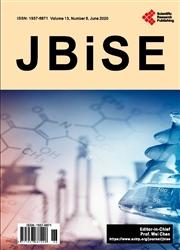Identification of Novel CDK9 Inhibitors with Better Inhibitory Activity and Higher Selectivity for Cancer Treatment by an Effective Two-Stage Virtual Screening Strategy
引用次数: 1
Abstract
The aberrant overexpression of cyclin-dependent kinase 9 (CDK9) in cancer cells results in the loss of proliferative control, making it an attractive therapeutic target for various cancers. However, the highly structural similarity between CDK9 and CDK2 makes the development of novel selective CDK9 inhibitors a challenging task and thus limits their clinical applications. Here, an effective two-stage virtual screening strategy was developed to identify novel CDK9 inhibitors with better inhibitory activity and higher selectivity. The first screening stage aims to select potential compounds with better inhibitory activity than Roniciclib, one of the most effective CDK9 inhibitors, through reliable structure-based phar-macophoric virtual screening and accurate molecular docking analyses. The second stage employs a very detailed visual inspection process, in solvation energy and/or reducing polar solvation energy can significantly improve the binding affinity of these CDK9 inhibitors. Their clinical potentials to serve as anticancer drug candidates can be further evaluated through a series of in vitro/in vivo bioassays in the future. To the best of our knowledge, this is the first attempt to identify novel CDK9 inhibitors with both better inhibitory activity and higher selectivity through an effective two-stage virtual screening strategy.通过有效的两阶段虚拟筛选策略鉴定具有更好抑制活性和更高选择性的新型CDK9抑制剂用于癌症治疗
细胞周期蛋白依赖性激酶9 (CDK9)在癌细胞中的异常过表达导致增殖控制的丧失,使其成为各种癌症的有吸引力的治疗靶点。然而,CDK9和CDK2之间的高度结构相似性使得开发新的选择性CDK9抑制剂成为一项具有挑战性的任务,从而限制了它们的临床应用。本研究开发了一种有效的两阶段虚拟筛选策略,以鉴定具有更好抑制活性和更高选择性的新型CDK9抑制剂。第一阶段筛选旨在通过可靠的基于结构的药理虚筛选和精确的分子对接分析,筛选出比目前最有效的CDK9抑制剂之一Roniciclib具有更好抑制活性的潜在化合物。第二阶段采用非常详细的目视检查过程,在溶剂化能和/或减少极性溶剂化能可以显著提高这些CDK9抑制剂的结合亲和力。它们作为抗癌候选药物的临床潜力可以在未来通过一系列体外/体内生物测定进一步评估。据我们所知,这是首次尝试通过有效的两阶段虚拟筛选策略确定具有更好抑制活性和更高选择性的新型CDK9抑制剂。
本文章由计算机程序翻译,如有差异,请以英文原文为准。
求助全文
约1分钟内获得全文
求助全文

 求助内容:
求助内容: 应助结果提醒方式:
应助结果提醒方式:


